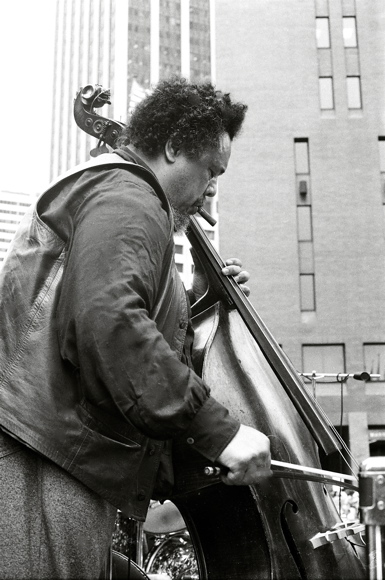Once upon a time, there was a young man, studying to be a saxophonist. This student had a teacher, Robin Yates, who taught jazz improvisation at Southern Oregon University. Hilarious to imagine this... I feel it's more about a mindset and a skillset than a classroom- bla bla bla. Anyway, Robin was just the right teacher for this kid, he said this one thing one day, (twenty years ago) that stuck.
"When improvising, you can never play a wrong note. What matters is what note you play next."
-Robin Yates
After twenty years of pondering this, I [the student] decided to look into the source. With the aid of some search engines, I found:
Miles Davis, photo: Oliver Nurock
“It’s not the note you play that’s the wrong note – it’s the note you play afterwards that makes it right or wrong.”
Any note can be right as long as you follow it well. Taken to an extreme, this mindset implies that a song can be made up of any sequence of notes, plus one really thoughtful note at the end. As long as you keep playing and listening, there is always the potential to make sense of what came before. The challenge is finding a note that will carry the music forward, or a note that allows a phrase, (or a song) to end.
Live artwork, like music, is less forgiving than painting. In my studio I have my lifetime to find that elusive "right-note". Only when I declare a piece is finished does the viewer get invited to experience my work. The viewer is left with one impression on the retina. One image hits all at once. One experience happens and, blam, if I end on the right note... no mark feels out of place. All past marks are necessary to arrive at the present.
I think that every canvas could potentially find resolution with one mark. I've never gotten the first mark right. I paint and paint and paint in response to mark #1. Looking for the right note, my compositions often go through the following steps:
1)A rough gestural expression of an idea that explodes onto the canvas.
2)A refining and defining period where thoughts get deeper, but often overworked in a search for understanding.
3)A final gestural layer that reasserts the idea with more simplicity, nuance, and clarity than the initial creative burst.
I should try a painting where I count my marks on a canvas. Just one out of curiosity, count the marks as I go and see how many it takes me to finish a painting. That would be a true exercise in focus. I respect calligraphy so much for its focus, clarity, and execution. I would love to paint like that. My third step is where, (after a lifetime of practice) a calligrapher begins.
-simplicity-
Though he got pretty far out as he aged, I think Miles was always searching for that next, more-right note. This leads me to another quote I like, from another jazz musician, a bass player:
“In my music, I’m trying to play the truth of what I am. The reason it’s difficult is because I’m changing all the time.”
Charles Mingus, photo: Tom Marcello
If my search for the right mark ever resolves the chaos of my past, and leads me to paint the simple truth of what I am, that will be a great day.

